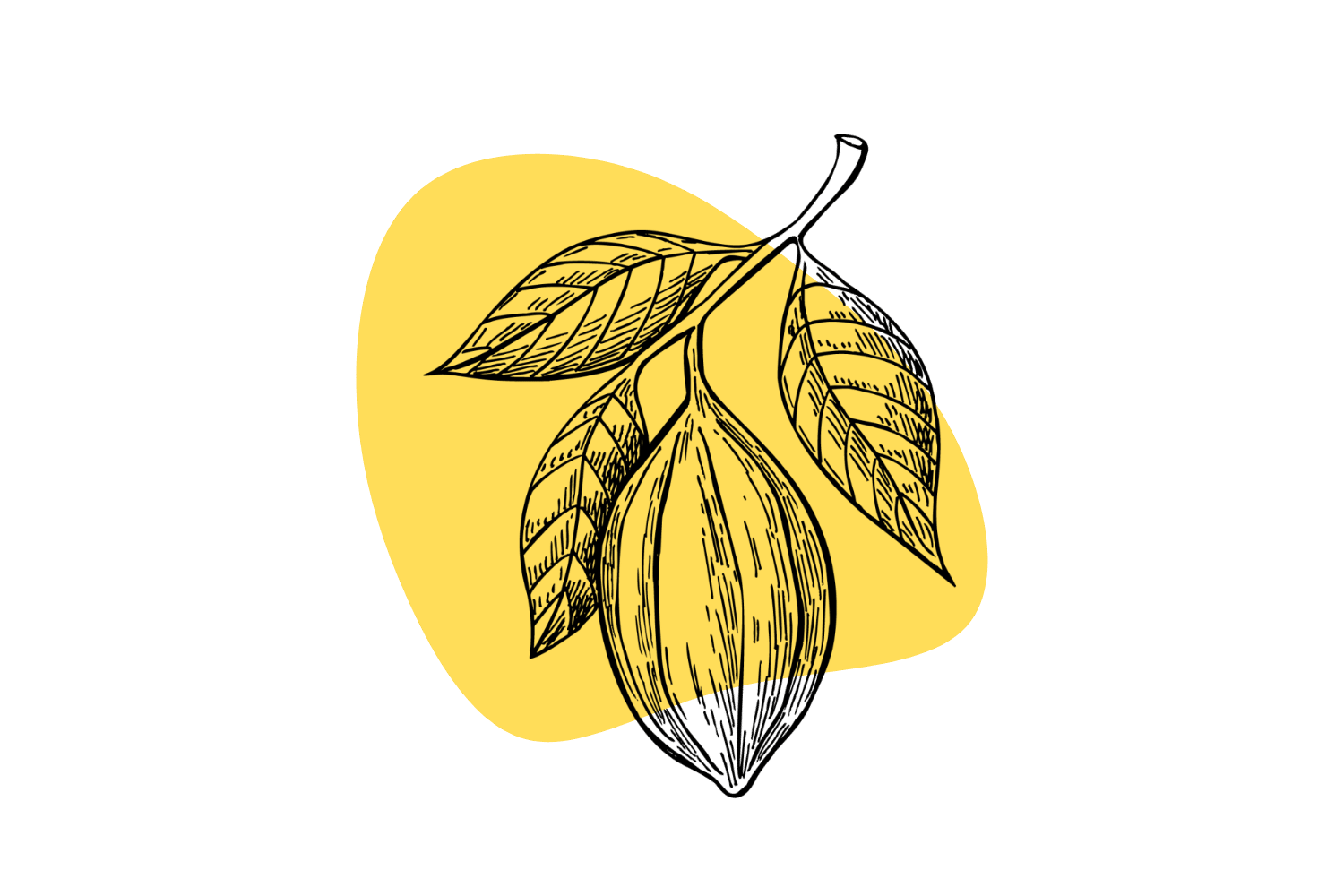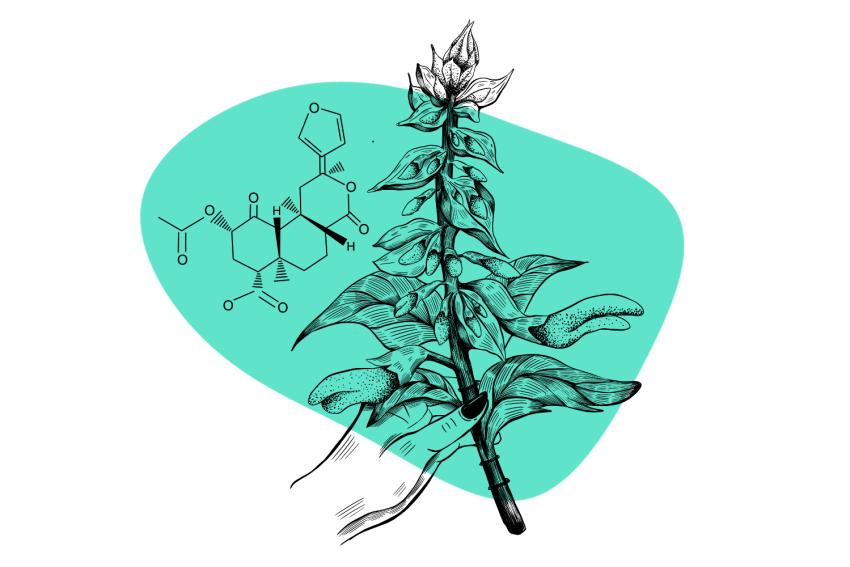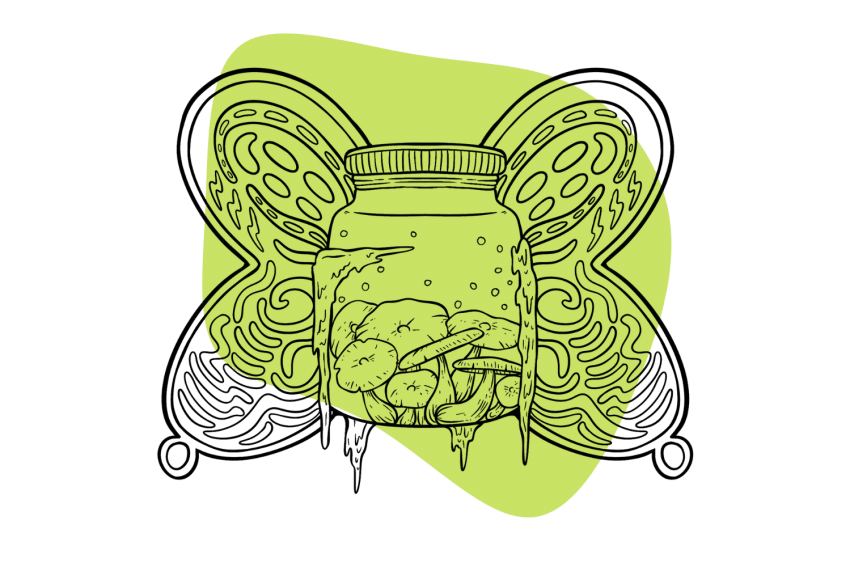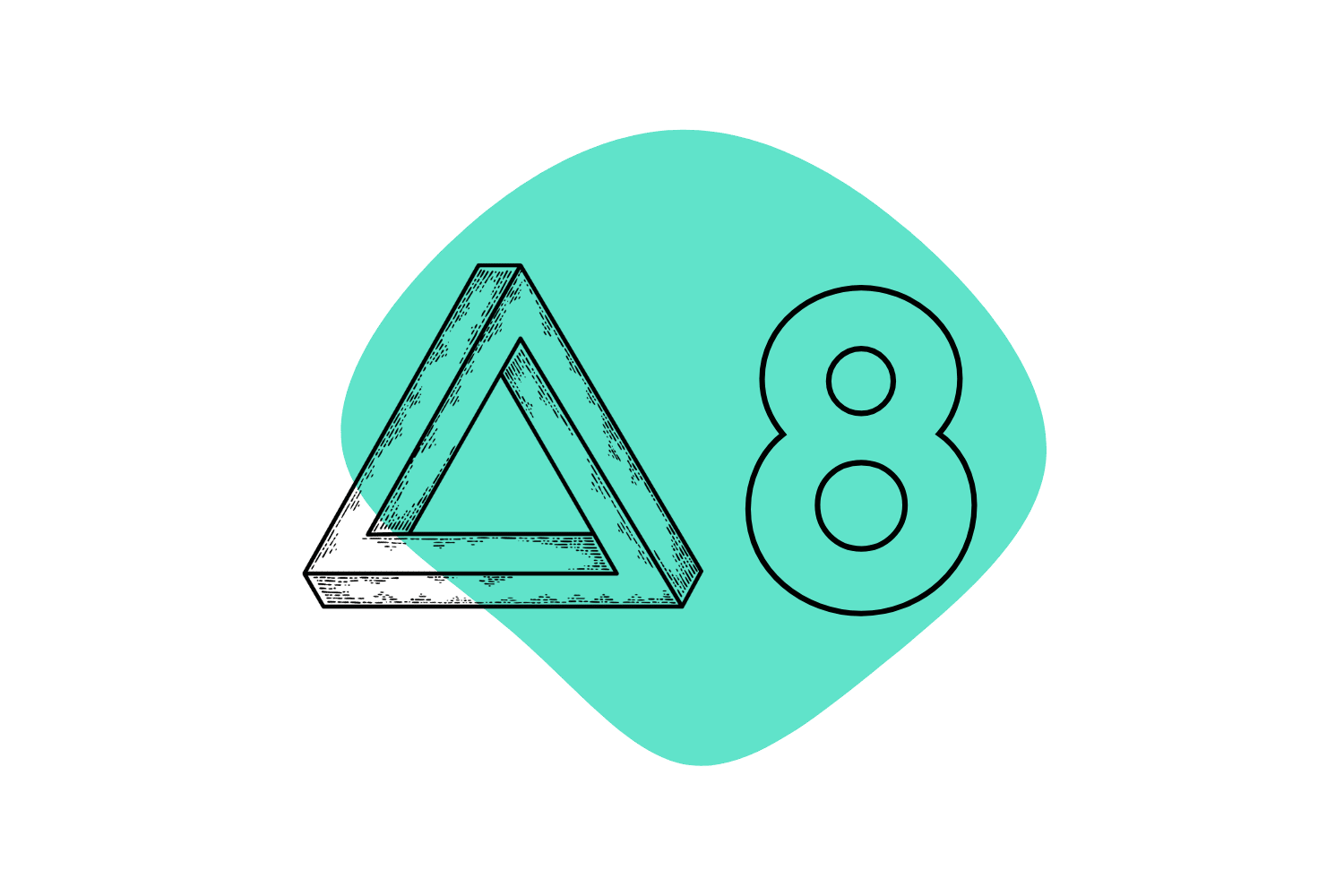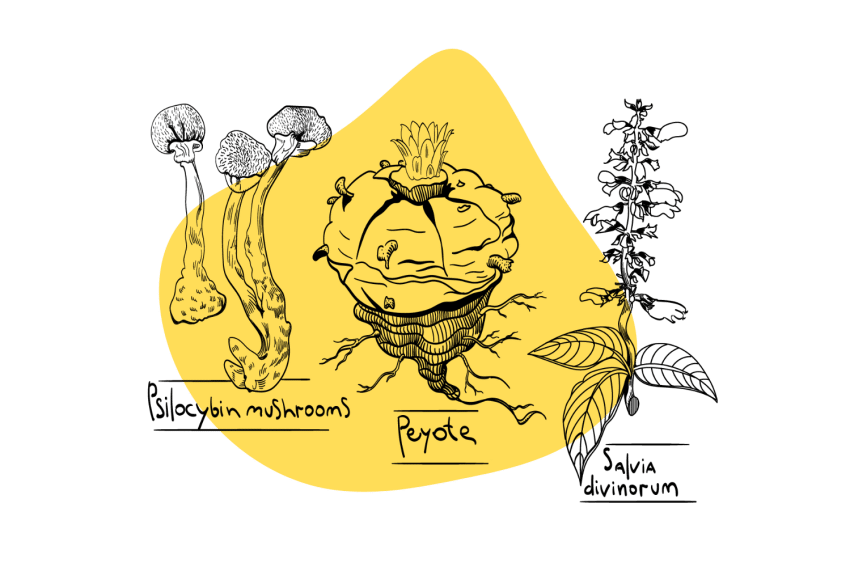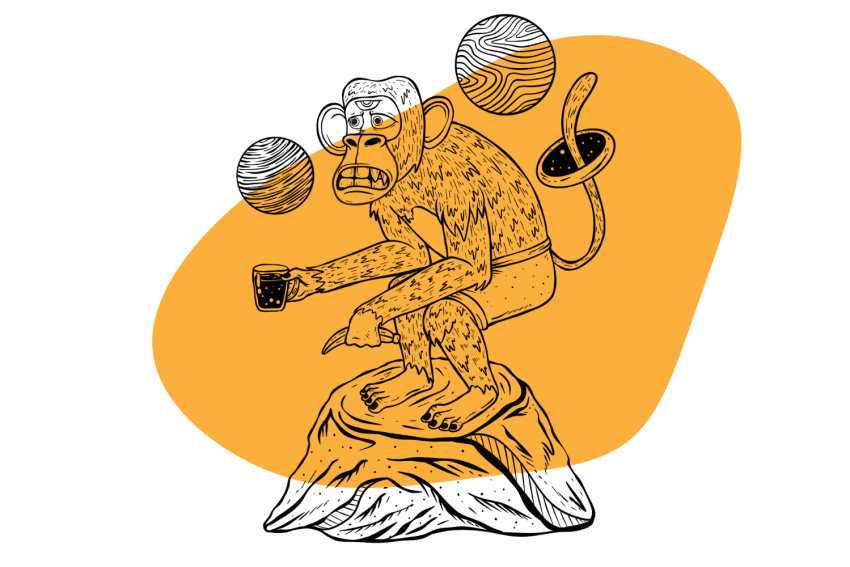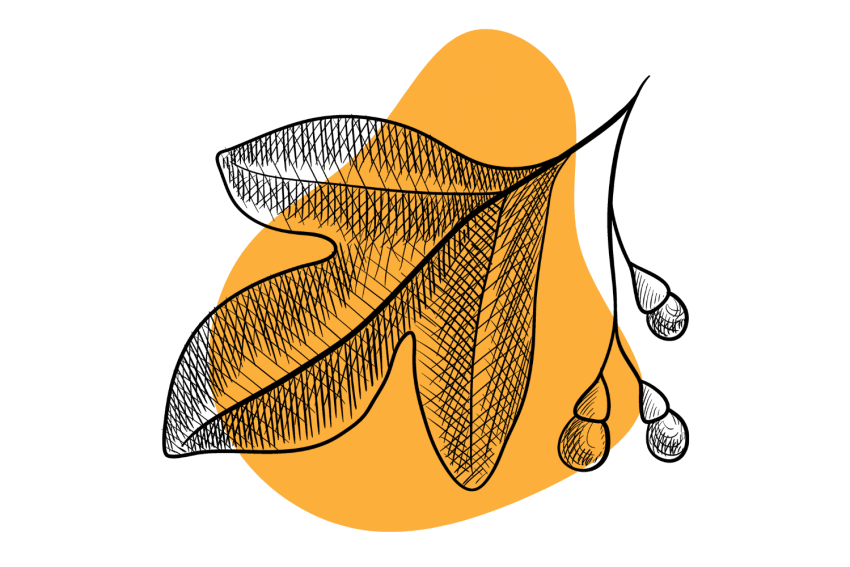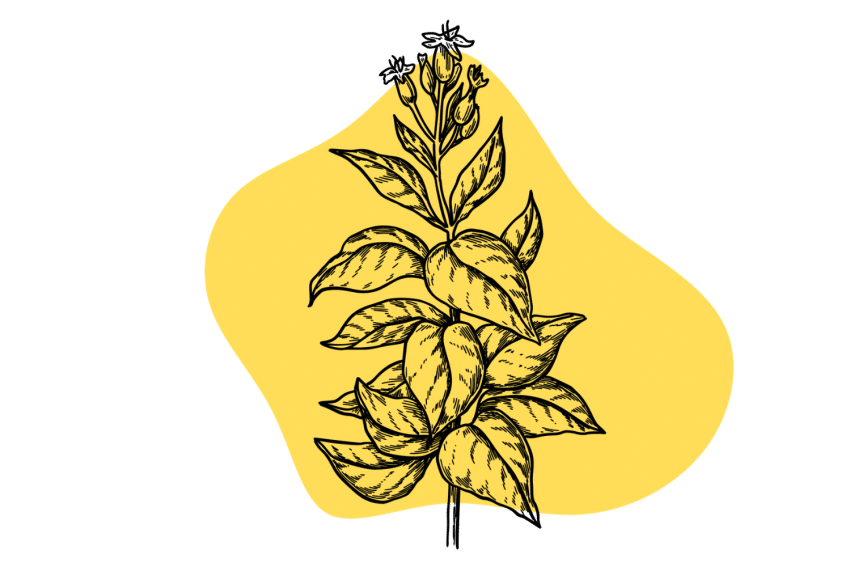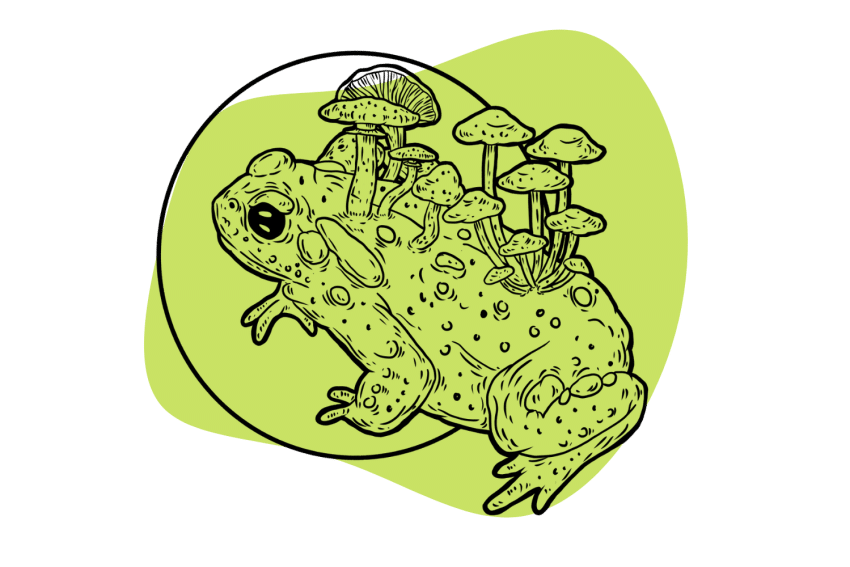Kanna: Exploring One of Nature’s Best Antidepressants
Kanna isn’t psychedelic, but its usefulness as a mood stabilizer shouldn’t be underestimated.
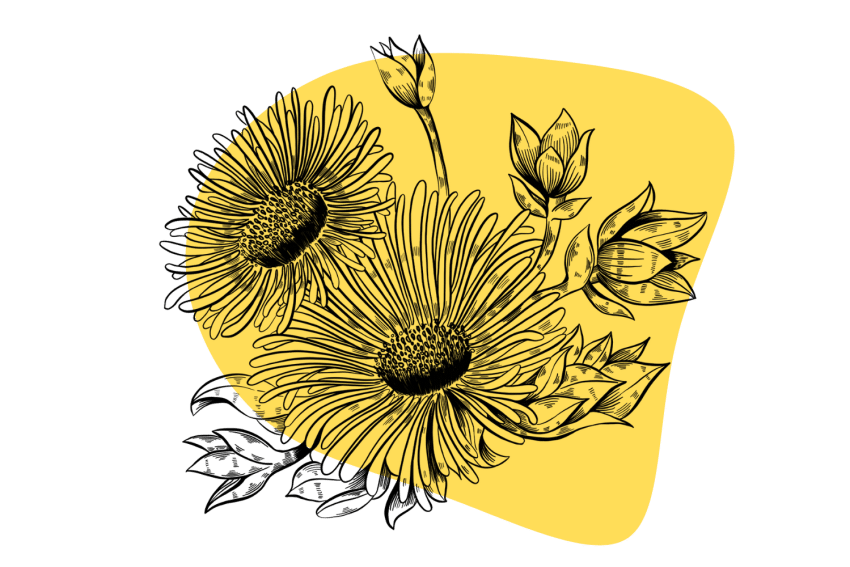
Despite what many resources might suggest online, kanna is not hallucinogenic. The effects are mild compared to other herbs like marijuana or kratom.
However, the effects of kanna are still strong enough to be useful for a wide range of psychological disorders — especially surrounding mood and depression.
The euphoric action also makes this herb popular in combination with marijuana to help offset some of the side effects.
Learn what kanna is used for, how it works, and how it compares to other psychoactive herbs like kava, kratom, and marijuana.
What is Kanna?
Kanna (Sceletium tortuosum) is a succulent plant from South Africa primarily used as a mood stabilizer. It acts on serotonin, which makes it useful for managing depression, anxiety, and low libido.
The psychoactive effects of kanna are subtle. You’ll only notice perceptual changes if used in high doses.
This plant is not hallucinogenic but does have empathogenic and antidepressant qualities. The effects are most noticeable in people experiencing mood disorders. People who don’t have problems regulating their mood rarely report any change after using kanna.
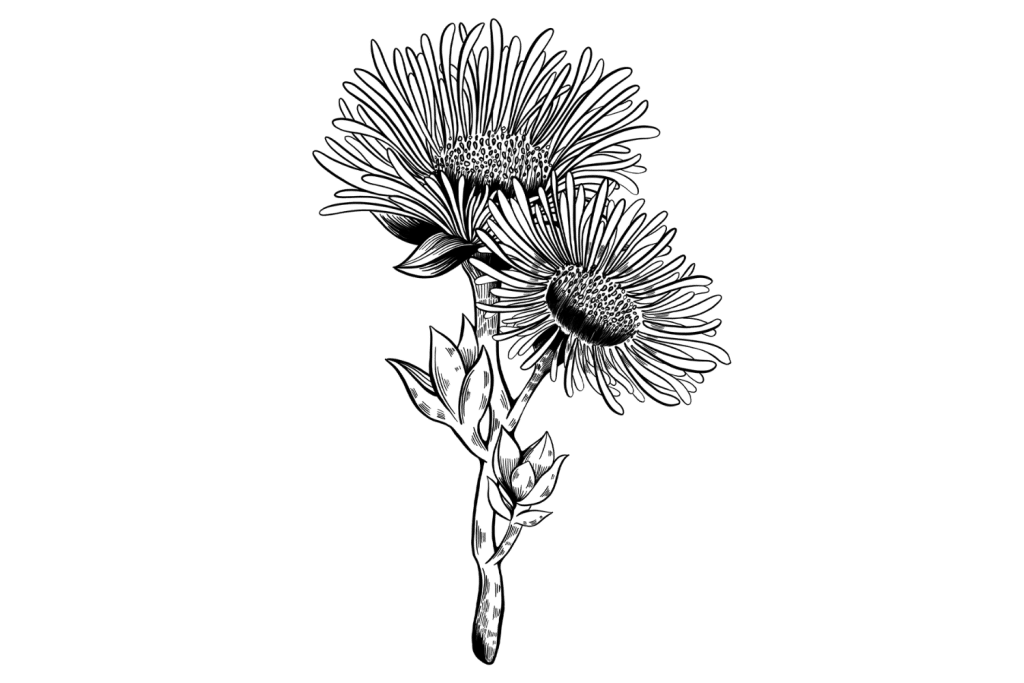
The active ingredients are four similar alkaloids called mesembrine, mesembrenone, & tortuosamine.
These alkaloids target other neurotransmitters aside from just serotonin.
They’ve been found to inhibit acetylcholinesterase, which is a key target for anti-Alzheimer medications. It works by slowing the breakdown of acetylcholine in the brain. Acetylcholine is a neurotransmitter associated with memory and learning, among other things.
Kanna alkaloids have also been shown to inhibit an enzyme known as PDE4 — which is the same enzyme targeted by drugs like Viagra and Cialis for improving blood flow to the penis to facilitate erections.
Some studies suggest kanna also acts through the endocannabinoid system similarly to CBD (cannabidiol).
There are a total of eight species of kanna that are all used the same way and sold under the common name, kanna:
- Sceletium crassicaule
- Sceletium emarcidum
- Sceletium exalatum
- Sceletium expansum
- Sceletium rigidum
- Sceletium strictum
- Sceletium tortuosum (most common)
- Sceletium variants
Kanna Specs & Technical Details
| Active Ingredients | Mesembrine, mesembrenone, mesembrenol & tortuosamine |
| Level of Risk | Low |
| Common Names | Kanna, Channa, Sceletium, Kauwgoed |
| Most Common Side-Effects | Nausea, fatigue, brain fog |
| Duration of Effects | 2–5 hours |
| Legality | Legal in most parts of the world |
Trip Sitter Safe Kanna Guidelines
- Know your dose — start with 20 mg when using kanna for the first time, and increase the dose gradually
- Know the timeline — the effects of kanna last between 2 and 5 hours
- Don’t mix — it isn’t safe to mix kanna with other drugs, medications, or alcohol
- Know when to avoid kanna — don’t take kanna if you’re using antidepressants, high blood pressure medications, or erectile dysfunction medications
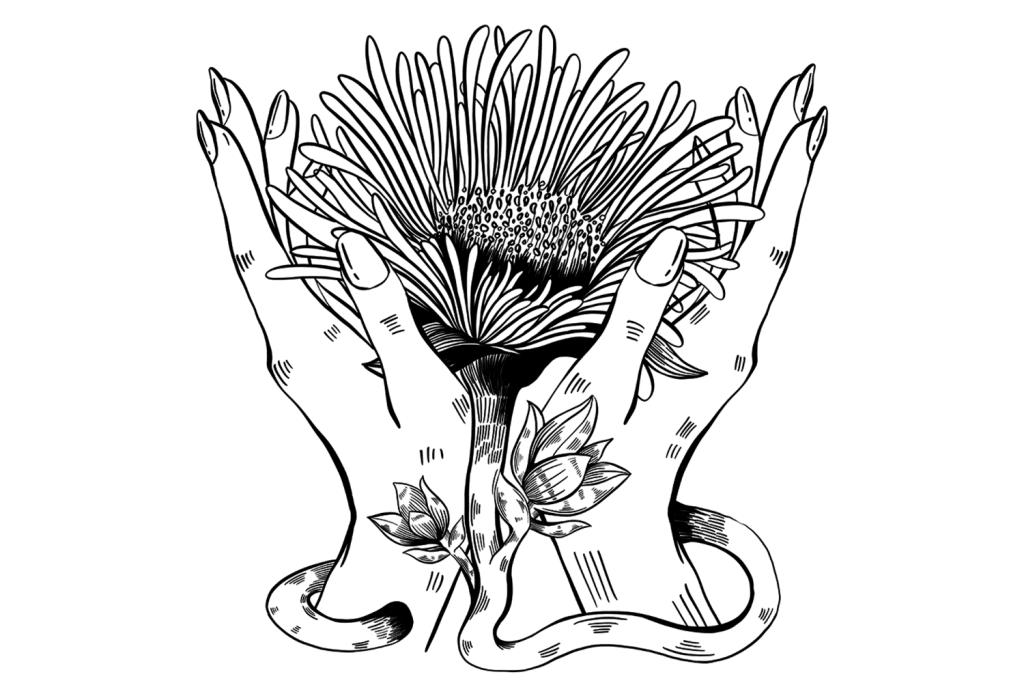
What’s The Dose of Kanna?
The dose of raw kanna ranges from 20 to 500 mg of raw powder.
The wide range of doses for this plant stems from the many different ways of using it. You’re going to need a much lower dose if snorting the herb compared to making it into tea.
Here are the most common dosage ranges for kanna depending on the method of consumption:
- Chewed fermented kanna leaves —100–1000 mg chewed with gum for 15 minutes and then spat out
- Sublingual (powder) — 100–1000 mg, held in the mouth for 15 minutes before swallowing
- Zembrin (commercial kanna concentrate) — 25–50 mg per day
- Insufflation (snorted) — 20–50 mg per dose
- Smoked — 100 – 500 per session
- Kanna Tincture — Equivalent dose of 200–2000 (0.5–1 mL of a 1:3 tincture)
- Kanna Tea — 200–1000 mg steeped in hot water for 10–20 minutes
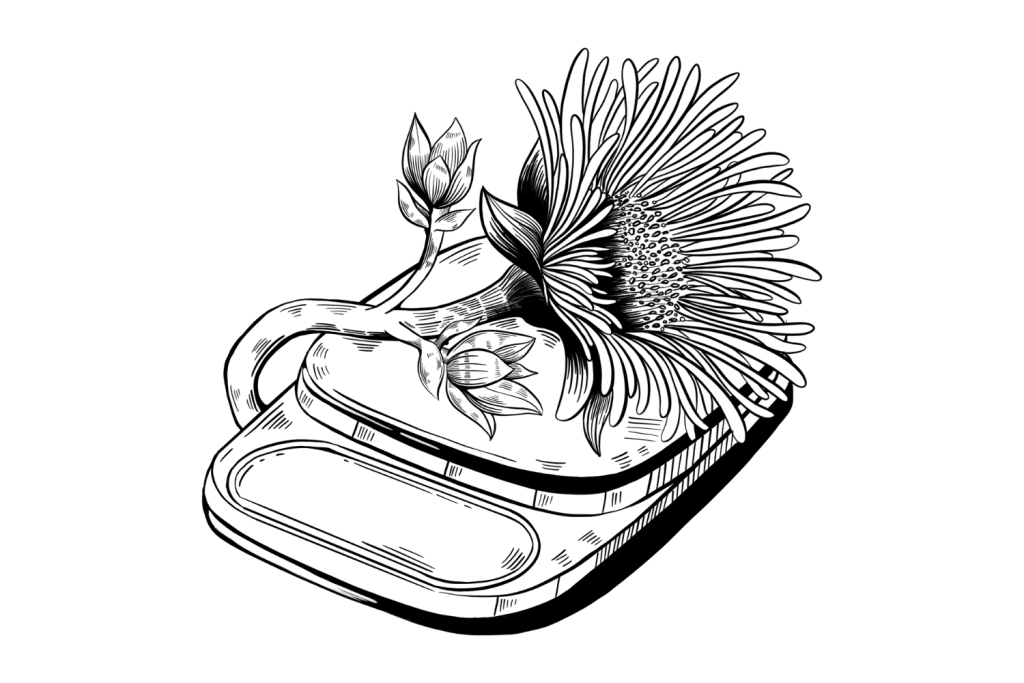
What is Kanna Priming?
Kanna has many associated benefits. It creates a sense of euphoria and wellbeing and can dramatically improve concentration and focus.
However, first-time users often report the opposite effects — it makes them feel unwell, nauseous, fatigued, or mentally “clouded.”
This phenomenon is common enough to have its own name — referred to as priming.
The downside of kanna priming usually only occurs for the first one to three sessions and will eventually disappear in place of the more desirable traits of this plant.
Not everybody feels the negative effects of priming — some estimates suggest about one in three people will experience negative side effects the first time they use the plant.
Should I Use Fermented Kanna or Regular Kanna?
The traditional method for preparing kanna involves a fermentation process. This process is thought to increase the potency of the alkaloids inside kanna and reduce the concentration of oxalates, which may be dangerous if used in high doses.
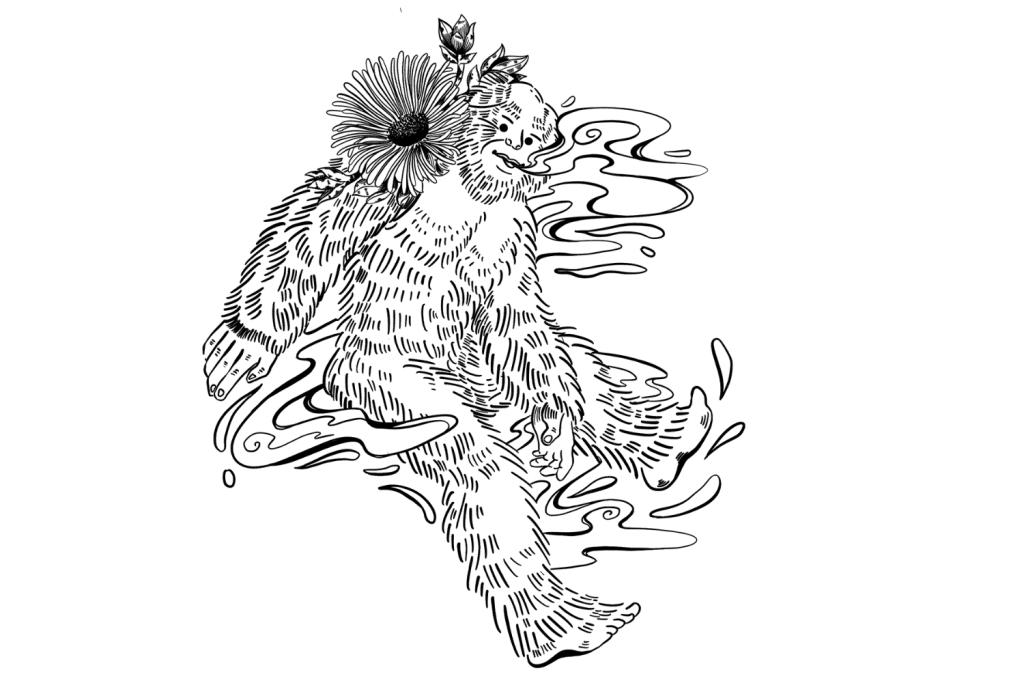
The downside is that fermented kanna has a terrible taste. If you can stomach the taste, fermented Kanna is generally preferred. If not, raw kanna will work as well and doesn’t taste nearly as bad (honestly, it still doesn’t taste great).
What Does Kanna Do?
The effects of kanna are subtle — it isn’t going to make you hallucinate or bring you into an altered state of consciousness.
Kanna feels very similar to kava (Piper methysticum). It quiets the mind and relaxes the body. You feel comfortable and chill but otherwise maintain a natural state of cognition.
Kanna & Mood
Kanna is a serotonin reuptake inhibitor — which means it prevents serotonin that’s been released in the synapses from being reabsorbed and broken down. The impact of this is an elevated level of serotonin in the brain and a lower threshold for the effects of serotonin — which often involve an improvement in mood and empathy towards others.
The euphoric effects of kanna are also subtle for most people, but those who are depressed or have a low mood will notice the biggest difference. Kanna isn’t like MDMA (ecstasy) in that it boosts normal mood — instead, it merely brings the low mood back up to normal levels.
Kanna & Erectile Function
Kanna inhibits PDE4 — which is the same target for drugs like Viagra, Cialis, Kamagra, or Levitra. This enzyme is responsible for breaking down cAMP, a chemical messenger that tells the arteries to relax. When blood vessels relax, they widen — which allows more blood to flow through them.
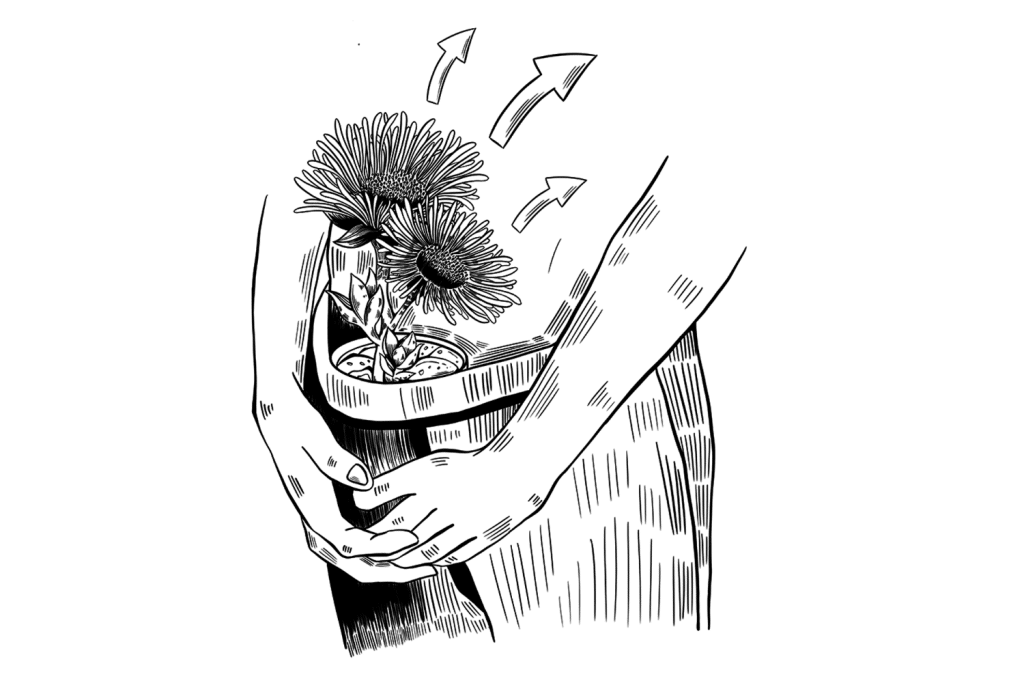
There are several different types of PDE. PDE4 is most abundant in the penis and the ears. By blocking PDE4, cAMP levels increase, making it much easier for blood to flow into the penis and produce an erection.
Kanna & Sleep
Kanna is not classified as a sedative or soporific, but it can help with sleep.
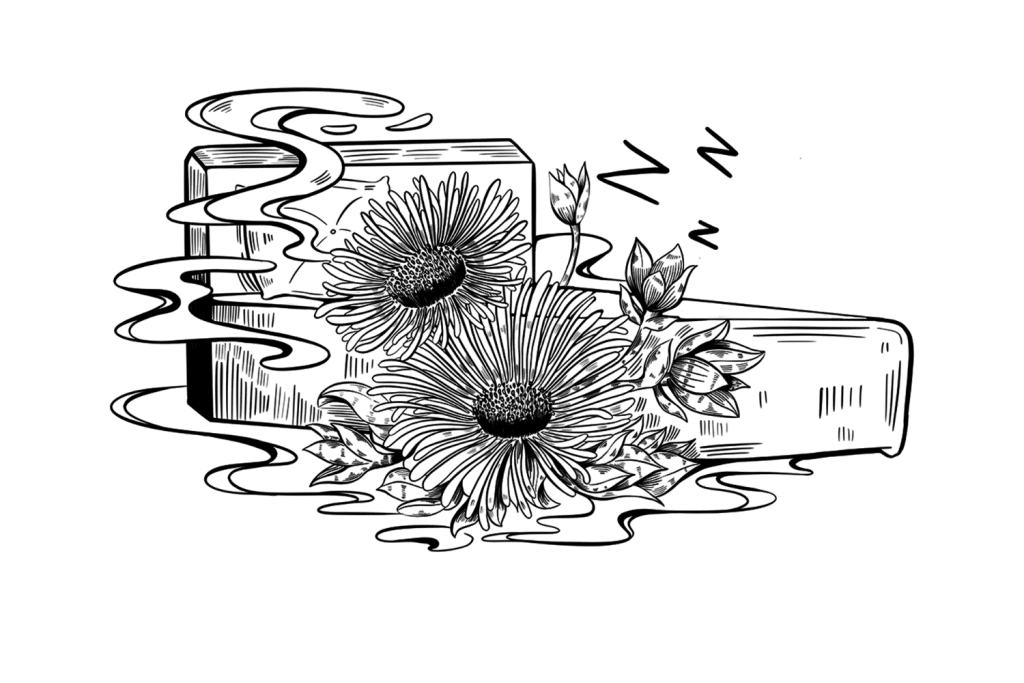
This effect stems from its ability to promote a sense of inner peace and relaxation. It essentially fights feelings of anxiety or hyperactivity that could be interfering with sleep.
With that said, some people experience the opposite effects when using kanna — feeling more alert and awake rather than calm and tired.
Kanna & Appetite
One of the traditional uses of kanna is appetite inhibition. It allowed people to work longer hours in the day before feeling weighed down by hunger pains. This effect comes as a result of the interaction with serotonin — a key neurotransmitter involved in regulating hunger and satiety.
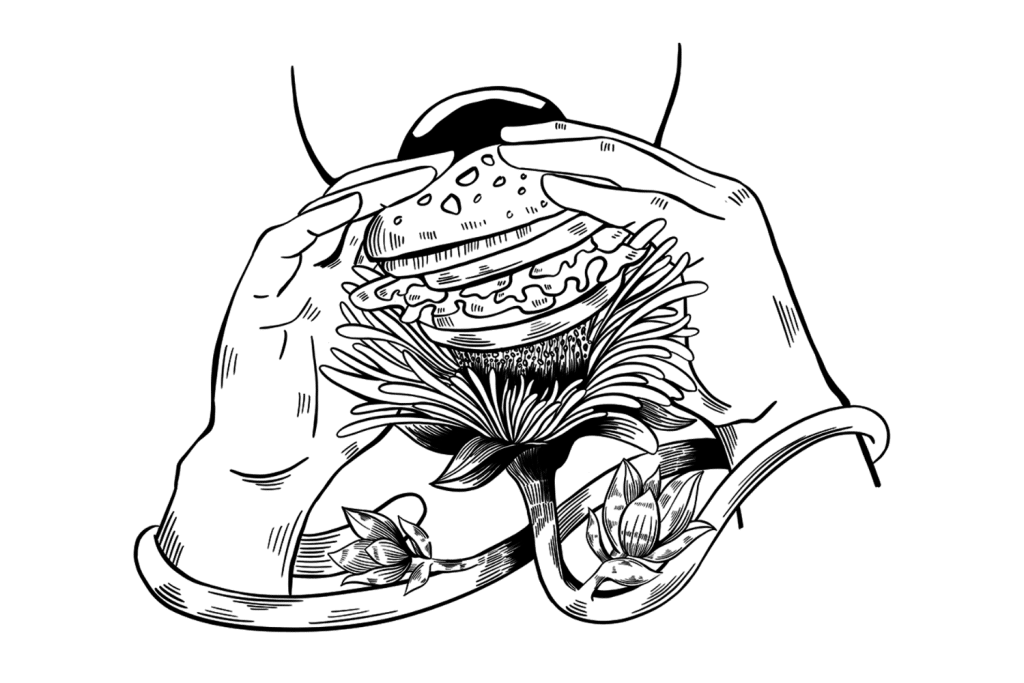
Kanna & Cognition
There are very few studies available to support the cognitive-enhancing effects of kanna. However, the theory is that because of the herb’s ability to increase serotonin, inhibit acetylcholinesterase, and block PDE4, kanna may be able to increase cognitive flexibility — according to a preclinical study from 2014 [1].
An early study used functional magnetic resonance imaging (fMRI) to explore the effects of kanna on the amygdala of the brain [2]. This region of the brain is the source of fear and anxiety. It sends signals to the rest of the brain to carry out the effects of the stress response when the brain perceives a threat. The study found that kanna extract (25 mg Zembrin) attenuated the amygdala response to help users remain focused on the task at hand.
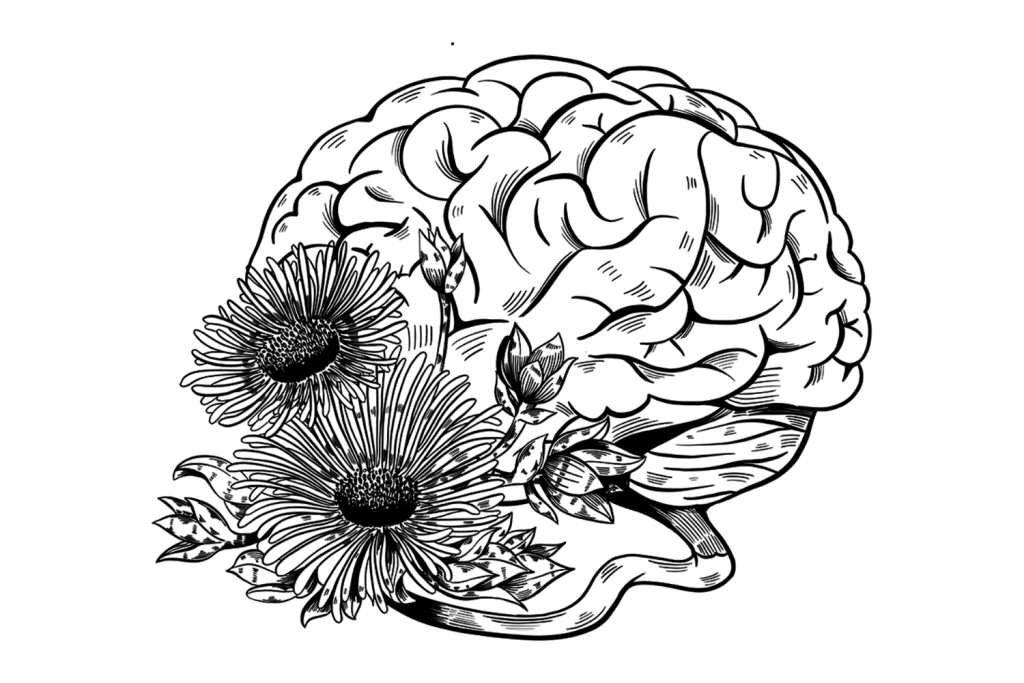
Does Kanna Cause a Hangover?
Kanna rarely results in a hangover — but it’s not impossible. Some users who took large doses of kanna report feeling groggy or tired the following day. Sometimes users will feel nauseous for a few hours after using the herb, especially after the first time using it.
Hangovers are more common when people take kanna on an empty stomach or don’t drink enough water throughout the day.
How Long Does Kanna Last?
The effects of kanna can vary in duration depending on what form you’re using. For example, snorting or smoking kanna has a rapid onset of effects but rarely lasts longer than three hours.
Using kanna as a tea, tincture, or sublingual absorption of the raw plant has a slow onset of effects (up to 45 minutes) but lasts the longest overall (up to 5 hours).
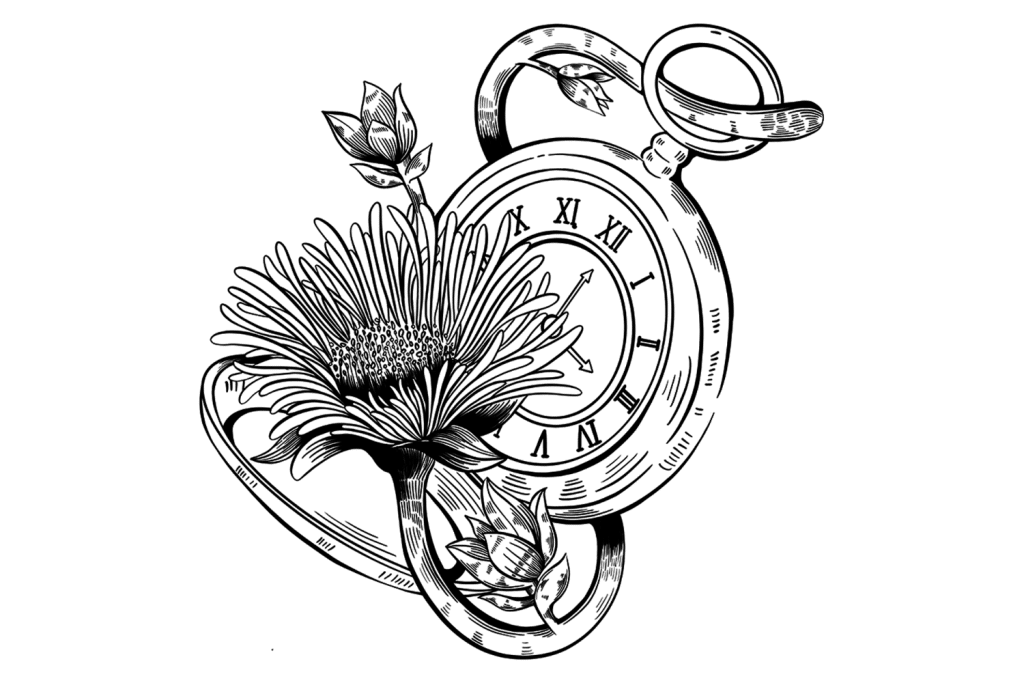
How Does Kanna Work? What Does the Research Say?
Serotonin Reuptake Inhibition
Serotonin is an important neurotransmitter most active in the brain and gut. It’s involved with the regulation of hormones, mood, sleep, hunger, and reproduction.
This neurotransmitter is affected by psychedelic substances like psilocybin, LSD, DMT, mescaline, and many others. These psychedelics work differently than kanna, however. These psychedelic substances activate the serotonin receptors — particularly the 5-HT2A receptors, which produce much of what we would consider the psychedelic experience.
Other substances, like MDMA, primarily target the 5HT1A receptors — which produce feelings of empathy and openness.
The active ingredient, mesembrine, doesn’t activate any of these receptors directly but works to slow the breakdown of serotonin throughout the brain. It prevents the reuptake of serotonin back into the neurons, where it’s promptly broken down and recycled. Because of some overlap, it’s possible kanna could have a similar but much more subtle impact — but only in those who already have under-functioning serotonin.
PDE4 Inhibition
Phosphodiesterase is an enzyme that breaks down cAMP — a chemical messenger with one task — to send a message to the arterial walls: “RELAX.”
Arteries are completely surrounded by muscle. When this muscle relaxes, it becomes wider, which allows more volume of blood to flow through it.
More volume of blood = erection.
PDE4 is a particular type of phosphodiesterase found most abundantly in the arteries involved with supplying blood flow to the penis. Normally, PDE4 is very active. cAMP is released and immediately broken down by PDE4 — thus preventing an erection.
When PDE4 is inhibited, cAMP is no longer broken down fast enough to keep the arteries contracted. And you know what that means.
Mesembrine from kanna has been shown to inhibit PDE4, which may improve erectile function [3].
There are other impacts from increasing cAMP activity often associated with kanna, such as metabolism and memory formation — but because of how specific PDE4 is for the penis and retina, these effects are a bit more of a reach.
VMAT2 Activation
VMAT2 stands for vesicular monoamine transporter 2. As the name implies, its job is to transport monoamines from inside the cell to outside the cell.
Monoamines refer to neurotransmitters like dopamine, serotonin, acetylcholine, norepinephrine, and GABA).
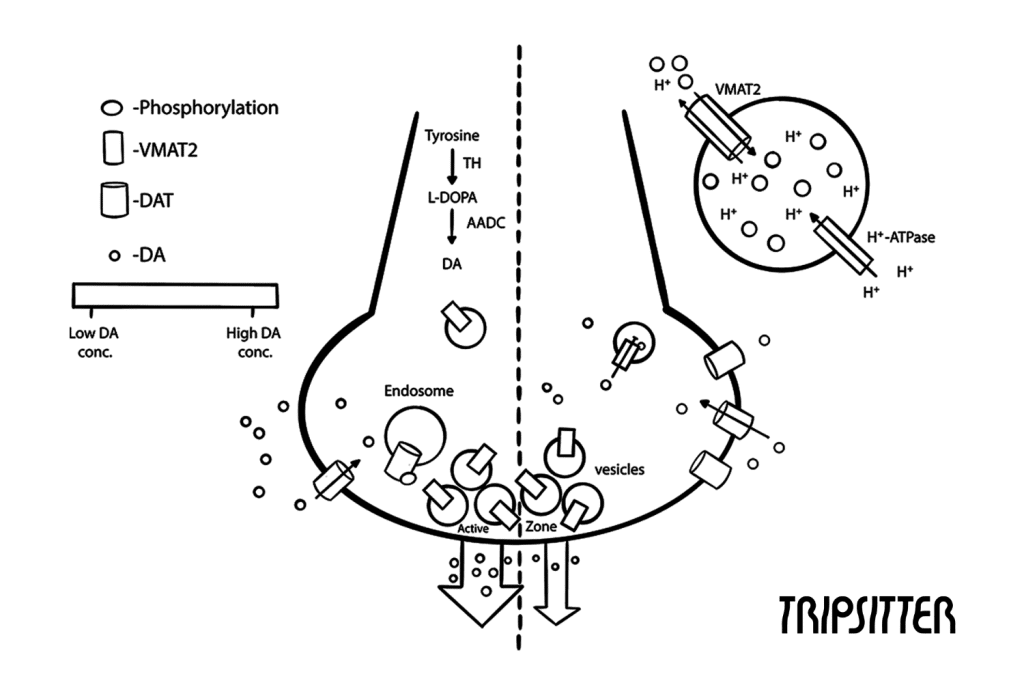
Mesembrine has been shown (in vitro) to activate this transporter — which could essentially ramp up the rate at which this transporter allows these neurotransmitters into the synapses.
This effect is very vague — there are a lot of conclusions you could draw from an effect on this small of a scale. With that said, it could explain some of the health benefits associated with this herb surrounding the concepts of cognitive flexibility, memory, dreaming, sexual function, mood, and more.
How Strong is Kanna Compared To Other Psychoactive Plants?
The effects of kanna are subtle. You may not even notice them.
The people who tend to report the biggest difference after using kanna are experiencing moderate to severe imbalances already — such as depression, poor outlook on life, or anxiety. People who use kanna that aren’t feeling this way are unlikely to feel much effect at all.
High doses are more likely to induce feelings of anxiety but also bring an elevated risk of side effects — which usually involves nausea or a general feeling of malaise.
Kanna vs. Kava
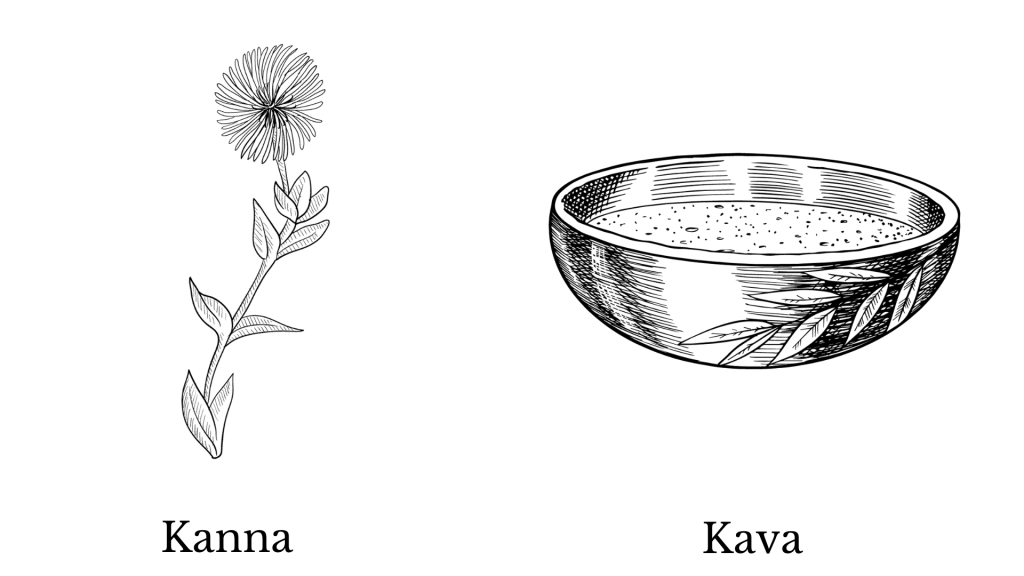
The effects of kanna are most similar to the tropical root of the Piper methysticum plant — AKA, kava.
The names used for these plants are similar, but the two are not related in any way. kanna is a member of the Aizoaceae family — which is the stone family of plants.
Kava is completely separate. It’s a member of the Piperaceae family, which is the same family that brings us black pepper.
The effects of kava and kanna are very similar despite having unique mechanisms of action.
Kava primarily acts on a neurotransmitter called GABA, as well as some mild interaction with the serotonin receptors. It produces a state of calmness, tranquility, euphoria, and sedation when used in higher doses. All of these effects are also shared with kanna.
The primary difference between these plants is the sedative action. Kava is significantly more soporific when used in higher doses. It can be so soporific you may even feel a little bit drunk as a result. While large doses of kanna are very relaxing, the effect is much lighter overall than the already light effects of kava.
Kanna vs. Kratom
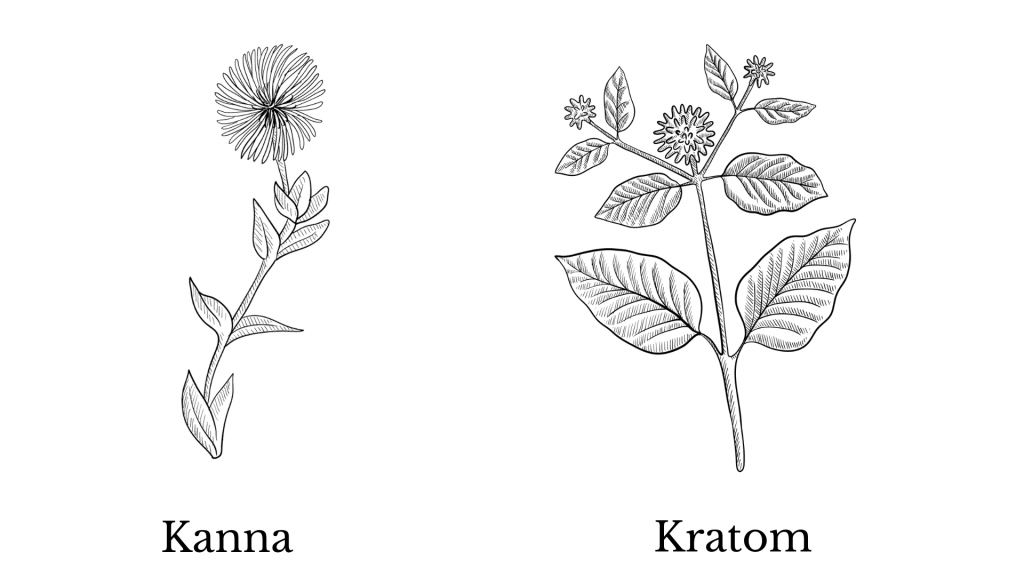
Kanna and kratom (Mitragyna speciosa) are also very similar in their effects on the body — however, kratom is much stronger than kanna in just about every category.
Kratom is strong enough to be considered a proper psychoactive herb. In low doses, it’s a stimulant with effects most comparable to coffee (a member of the same family), while higher doses are powerfully sedative, analgesic, and euphoric.
The downside of kratom is that because of how strong it is; it’s somewhat addictive if you aren’t careful. Kanna is like “kratom light,” offering pretty much all the same benefits but milder and less likely to lead to side effects or dependency.
Kanna vs. Marijuana
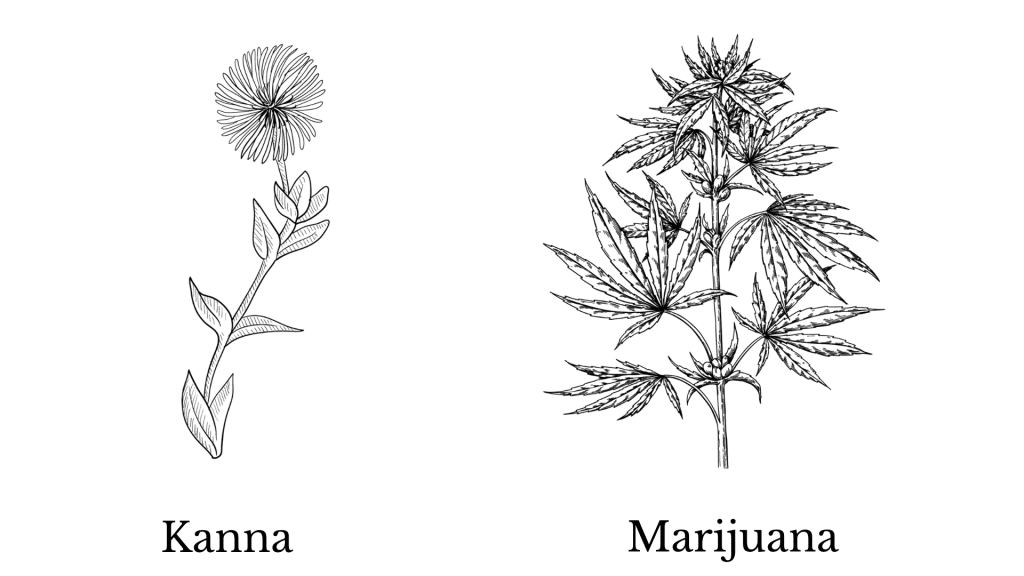
Kanna and marijuana (Cannabis sativa) share a few key similarities. Both are relaxing and mildly euphoric. Marijuana is much stronger on the psychoactive side, exhibiting a noticeable change in perception even with relatively low doses.
The main difference between these herbs is the lack of perceptual changes with kanna. You feel a similar degree of mental relaxation, but there are virtually no changes in visual or auditory experiences.
Kanna is much better as a libido-enhancer than marijuana, especially for men. This is due to the PDE4 inhibiting effects of kanna, which is something marijuana doesn’t offer at all.
Can I Mix Kanna With Psychedelics?
Some people like to mix kanna with other herbs, like damiana, marijuana, CBD, kratom, or psychedelics like magic mushrooms or LSD as a way to help prevent a bad trip. I’ve found it’s especially beneficial with marijuana as a way to offset negative side effects like paranoia or anxiety.
With that said, I don’t recommend you do this unless you’re already very familiar with the way kanna feels for you and what dose works best.
Experiencing side effects from using herbs for the first time, like kanna, while under the effects of other psychoactive substances could make the experience much worse than it was to start off with.
Is Kanna Safe?
Kanna is not a dangerous herb — you won’t hear about people overdosing on kanna because it isn’t happening.
Can you take too much Kanna?
Yes, it’s possible to take too much kanna, but you won’t die from high doses. The most you’ll feel is discomfort and nausea.
With that said, the biggest safety concern from kanna is the presence of a group of compounds called oxalates. These compounds are present in kanna in concentrations up to 5% — which is about the same you’ll find in common vegetable crops like kale or spinach.
Oxalates can damage the liver or kidneys by forming hard masses called “stones” if consumed in large concentrations.
Some studies have shown that very high doses of kanna concentrate leads to a spike in C-reactive protein (CRP). This is a protein produced by the body in response to inflammation. This research has never been reproduced in human studies.
Kanna Drug Interactions
There are a few categories of substances of medications that should be whenever using kanna. It’s not wise to combine kanna with any prescription medications.
Erectile Dysfunction Medications
Kanna has the same mechanism of effects as erectile dysfunction medications like Viagra or Cialis. This type of interaction is called an agonistic interaction.
When two or more substances are taken together that do the same thing, it significantly increases the chances of experiencing side effects.
It’s not wise to take kanna within 48 hours of using any erectile dysfunction medications. The potential side effects of these drugs can be severe — ranging from priapism (painful erection lasting 6 hours or more) to hearing loss or severe headaches.
Erectile Dysfunction Medications:
- Avanafil (Stendra)
- Sildenafil (Viagra)
- Tadalafil (Cialis)
- Vardenafil (Levitra, Staxyn)
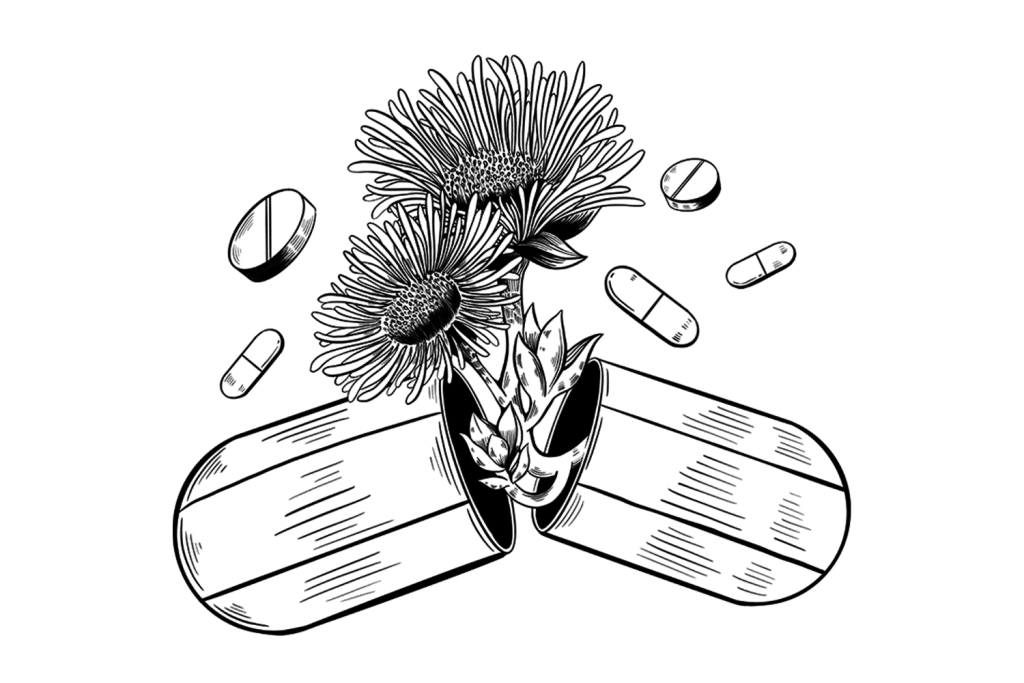
Blood Pressure Medications
Because of kanna’s effect on blood vessel dilation, it’s wise to avoid using this herb in combination with any blood pressure medications.
Kanna may negate the effects of drugs used to treat high blood pressure and could lead to side effects when combined with high blood pressure medications by causing blood pressure to drop too low. This can cause feelings of dizziness and lead to fainting.
Hypertensive Medications (For Low Blood Pressure):
- Midodrine (ProAmatine)
- Phenylephrine (Neo-Synephrine)
- Droxidopa (Northern)
- Ephedrine Sulfate (Akovaz)
Hypotensive Medications (For High Blood Pressure):
- Acebutolol (Sectral)
- Atenolol (Tenormin)
- Benazepril hydrochloride (Lotensin)
- Bisoprolol fumarate (Zebeta)
- Captopril (Capoten)
- Enalapril Maleate (Vasotec)
- Esmolol (Brevibloc)
- Fosinopril sodium (Monopril)
- Labetalol (Trandate, Normodyne)
- Metoprolol tartrate (Lopressor)
- Nadolol (Corgard)
- Nebivolol (Bystolic)
- Penbutolol sulfate (Levatol)
- Perindopril (Aceon)
- Propranolol (Inderal)
- Ramipril (Altace)
- Sotalol (Betapace)
- Trandolapril (Mavik)
Antidepressants
Kanna should be avoided when taking any antidepressants. The alkaloids in kanna inhibit the reuptake of serotonin — which is the same mechanism used by most antidepressant medications.
Mixing kanna with drugs like Zoloft, Prozac, Celexa, or Lexapro could increase the chance of side effects, including nausea, loss of libido, blurred vision, fatigue, and more.
Antidepressant SSRI Medications:
- Citalopram (Cipramil)
- Dapoxetine (Priligy)
- Escitalopram (Cipralex)
- Fluoxetine (Prozac or Oxactin)
- Fluvoxamine (Faverin)
- Paroxetine (Seroxat)
- Sertraline (Lustral)
- Vortioxetine (Brintellix)
Kanna Side Effects
- Brain fog
- Dizziness
- Fatigue
- Headache
- Muscle tension
- Nausea
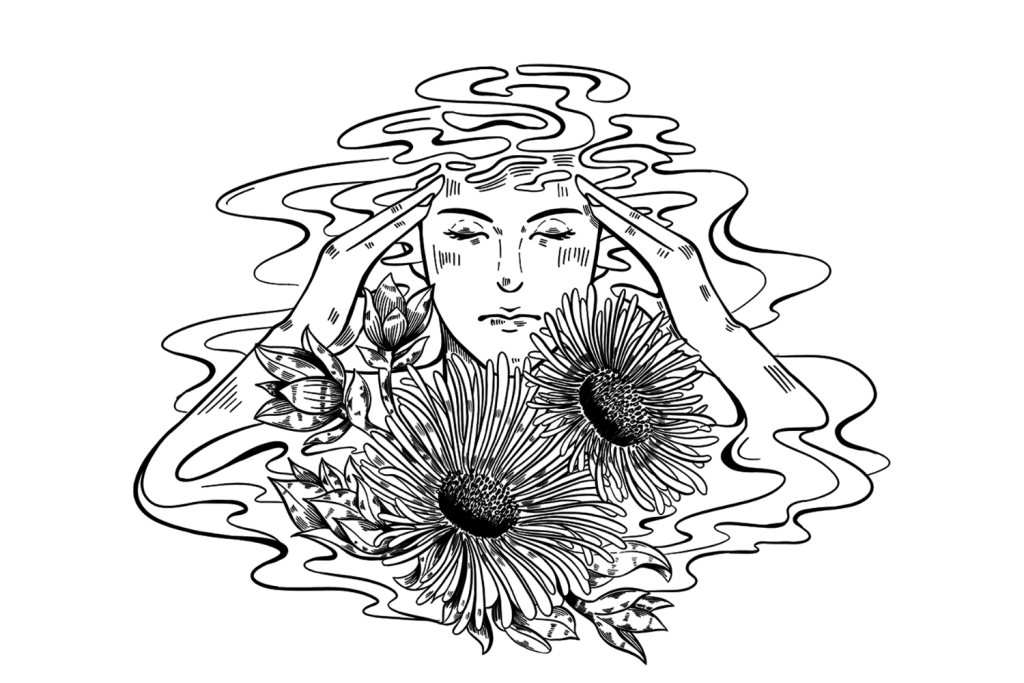
Is Kanna Addictive?
Kanna is not inherently addictive in the classical sense of the word. What this means is that kanna doesn’t cause dependency in the human body when used in reasonable amounts in the way substances like opiates, benzodiazepines, or alcohol do.
With that said, any substance that provides a sense of euphoria or escape from discomfort or depression can become habit-forming and eventually lead to issues with addiction if used for the wrong intention.
As long as you’re continually checking in with yourself and asking why you’re using kanna, you’re unlikely to find yourself in any serious issues with addiction. Kanna is an excellent herb for self-growth, focus, sexual performance, and buffering our mood during times of stress.
Kanna should not be used as a crutch or a bandaid for managing mental illness or trauma without addressing the underlying cause first.
The Dangers of Insufflation
One of the ways people often use Kanna is through insufflation — AKA snorting.
This produces rapid onset of effects and is a more efficient means of using kanna than other methods — like smoking or making tea. You need about a quarter of the dose when snorting as you do for oral methods of consuming the plant.
The problem is that snorting causes damage to the nasal cavity the more you do it.
People who snort kanna often experience what’s called “the drips,” which is a long-term side effect shared by cocaine users as well. Other side effects include a loss of your sense of smell, pain in the nasal cavity, frequent nosebleeds, headaches, and recurring sinus infections.
Growing Kanna At Home
One of the best aspects of kanna is how easy it is to grow some yourself. Surprisingly few psychoactive plants can be cultivated easily at home.
Kava, cacao, and kratom all require large plots of land and a sultry climate — not to mention both need to be at least four years old before they’re ready to harvest. Kanna can be grown easily from seed or cuttings in a small pot inside your house.
I’ve seen kanna at gardening centers, but it’s very rare to find. You’ll likely need to order your seeds from a specialty seed supplier like Strictly Medicinal Seeds.
Plant these seeds like you would any other. It works great in a humidity dome with seed-starting soil and lots of light. It can take several weeks for the seeds to sprout, so be patient.
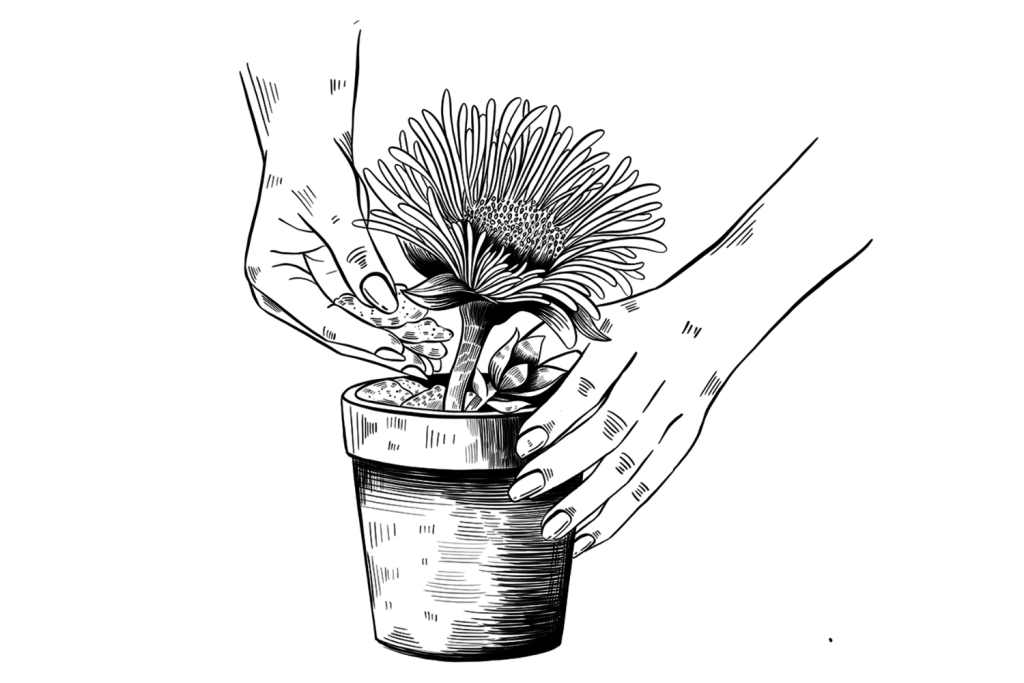
Kanna likes to hang out in a place with plenty of sun or artificial light and soil that’s well-draining.
This plant is super easy to grow. The main cause of failure is overwatering. You have to remember that kanna is a succulent that thrives in a part of the world that gets very little rain. While you might think you’re helping it out by giving it lots of water, it actually prefers to be kept dry. Water your plant every couple of weeks and you shouldn’t have any problems.
Is Kanna Legal?
Kanna is legal in most parts of the world — but it can be difficult to find. This herb has only recently started to gain traction outside South Africa. There are no countries that have banned this herb specifically.
It’s been proven safe through scientific research, it has a very long history of use, and there’s no indication whatsoever that the herb is addictive or poses any threat to society.
It’s very unlikely that kanna will be prohibited in the future — even as the plant becomes more popular in the Western world.
Why Kanna Doesn’t Work The Same Way For Everyone
The basis of kanna’s effects, especially surrounding mood and cognition, is through its impact on serotonin. Serotonin and serotonin receptors are very well studied. Researchers have shown that there are unique genetic SNPs in the human body that affect how we respond to serotonergic substances — such as kanna [4].
This is a field still being explored and is highly speculative — but could explain why some people respond to kanna very strongly and others very weakly.
Here’s a list of SNPs that have been identified as variable in response to serotonergic substances:
- GCHFR — weaker response to kanna
- TPH1 — weaker response to kanna
- TPH2 — stronger response to kanna
- HTR1A — weaker response to kanna
- HTR1B — weaker response to kanna
- SLC6A4 — LA allele stronger, S or LG weaker response to kanna
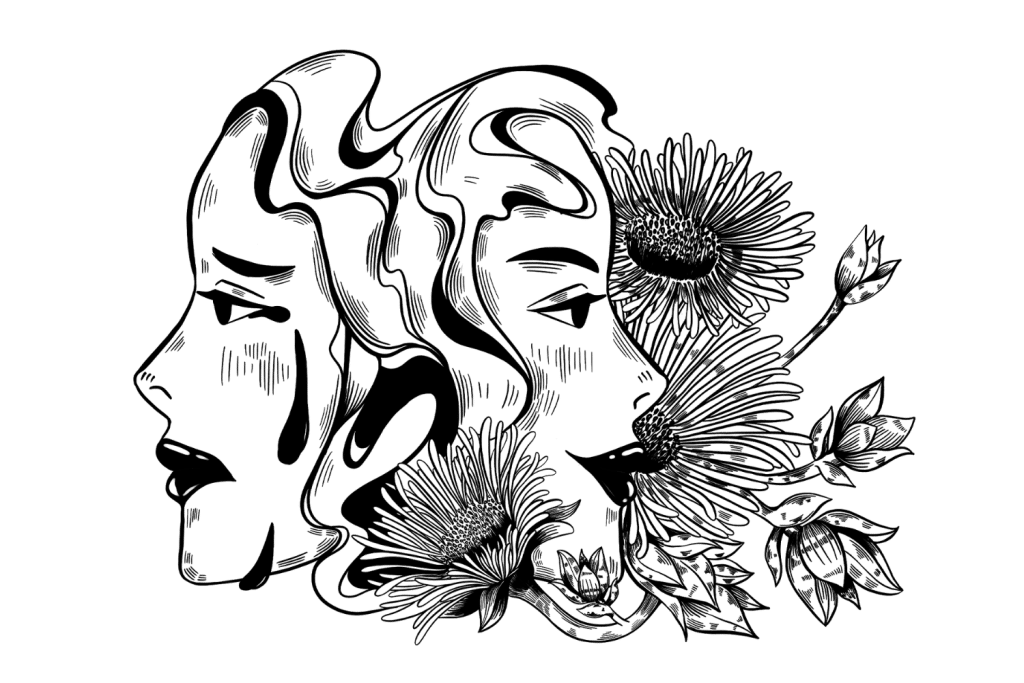
Final Thoughts: What is Kanna?
Kanna is a traditional herb from South Africa. It’s respected as a natural antidepressant and mildly euphoric.
Don’t expect the effects of this plant to be very powerful. It’s a very subtle herb — even more subtle than plants like kava, which has a comparable effect profile.
People use kanna as an alternative to antidepressant medications (mild forms only and with doctors’ approval). It’s also mixed with other substances like cannabis or psychedelics as a way to offset some of the negative side effects.
References
- Chiu, S., Gericke, N., Farina-Woodbury, M., Badmaev, V., Raheb, H., Terpstra, K., … & Goble, L. (2014). Proof-of-concept randomized controlled study of cognition effects of the proprietary extract sceletium tortuosum (Zembrin) targeting phosphodiesterase-4 in cognitively healthy subjects: Implications for Alzheimer’s dementia. Evidence-Based Complementary and Alternative Medicine, 2014.
- Terburg, D., Syal, S., Rosenberger, L. A., Heany, S., Phillips, N., Gericke, N., … & Van Honk, J. (2013). Acute effects of Sceletium tortuosum (Zembrin), a dual 5-HT reuptake and PDE4 inhibitor, in the human amygdala and its connection to the hypothalamus. Neuropsychopharmacology, 38(13), 2708-2716.
- Harvey, A. L., Young, L. C., Viljoen, A. M., & Gericke, N. P. (2011). Pharmacological actions of the South African medicinal and functional food plant Sceletium tortuosum and its principal alkaloids. Journal of ethnopharmacology, 137(3), 1124-1129.
- Kroeze, Y., Zhou, H., & Homberg, J. R. (2012). The genetics of selective serotonin reuptake inhibitors. Pharmacology & Therapeutics, 136(3), 375-400.

